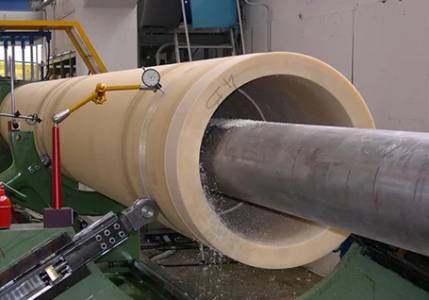Description
Textile Calendering: Enhance Fabric Quality & Performance
Textile calendering is a crucial finishing process that significantly improves the appearance, hand feel, and performance characteristics of various fabrics. This sophisticated technique utilizes precisely controlled pressure and heat to impart desired properties onto the textile material, resulting in a superior final product.
What is Textile Calendering?
Calendering involves passing fabric between a series of heated rollers under carefully regulated pressure. This process allows for a wide array of modifications, depending on the specific configuration of rollers, temperature, and pressure. The rollers can be made of various materials, including steel, rubber, and composite materials, each offering unique capabilities.
Benefits of Textile Calendering:
- Improved Appearance: Creates a smoother, glossier, or more matte finish depending on the desired effect. Eliminates wrinkles and creases, resulting in a more refined aesthetic.
- Enhanced Hand Feel: Modifies the fabric's drape, softness, and texture, leading to a more luxurious or functional hand feel. This can range from crisp and stiff to soft and drapey.
- Increased Density & Strength: Compresses the fabric, increasing its density and improving its strength and durability. This is particularly beneficial for applications requiring tear resistance or dimensional stability.
- Improved Water Repellency: Certain calendering processes can enhance the fabric's water resistance, making it suitable for outdoor apparel or other applications requiring water protection.
- Dimensional Stability: Reduces shrinkage and improves dimensional stability, ensuring the fabric retains its shape and size after washing or wear.
- Enhanced Printability: Prepares the fabric for printing by creating a smoother surface that allows for better ink adhesion and sharper print results.
Types of Textile Calendering:
Different types of calendering machines are employed to achieve specific results. These include:
- Chilled Calendering: Uses chilled rollers to produce a softer, less shiny finish.
- Glazed Calendering: Employs highly polished rollers under high pressure to create a high-gloss finish.
- Embossing Calendering: Utilizes engraved rollers to imprint patterns and textures onto the fabric.
- Friction Calendering: Creates a lustrous finish by using rollers with differing speeds and surface textures.
- Schreiner Calendering: Produces a subtle, silky sheen on fabrics using fine-grained rollers.
Applications of Textile Calendering:
Textile calendering is widely used in the finishing of various fabrics, including:
- Apparel Fabrics: Cotton, linen, silk, wool, and synthetic fabrics for clothing.
- Home Textiles: Curtains, upholstery, bed linens, and towels.
- Industrial Fabrics: Technical textiles used in automotive, aerospace, and medical applications.
Conclusion:
Textile calendering is a versatile and indispensable process in the textile industry. Its ability to enhance the aesthetic appeal, performance, and functionality of fabrics makes it a critical step in producing high-quality textile products across a vast array of applications. By carefully controlling process parameters, manufacturers can tailor the calendering process to meet the specific requirements of any given fabric and end-use.
